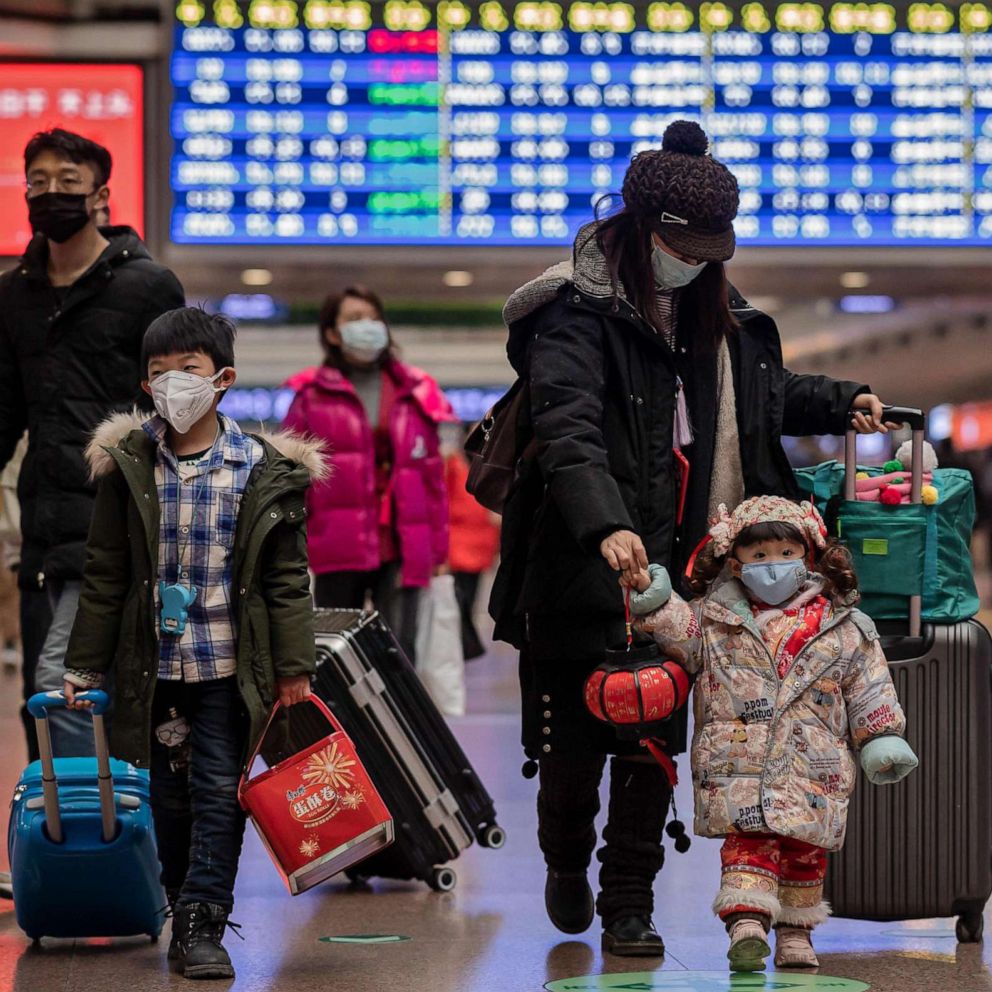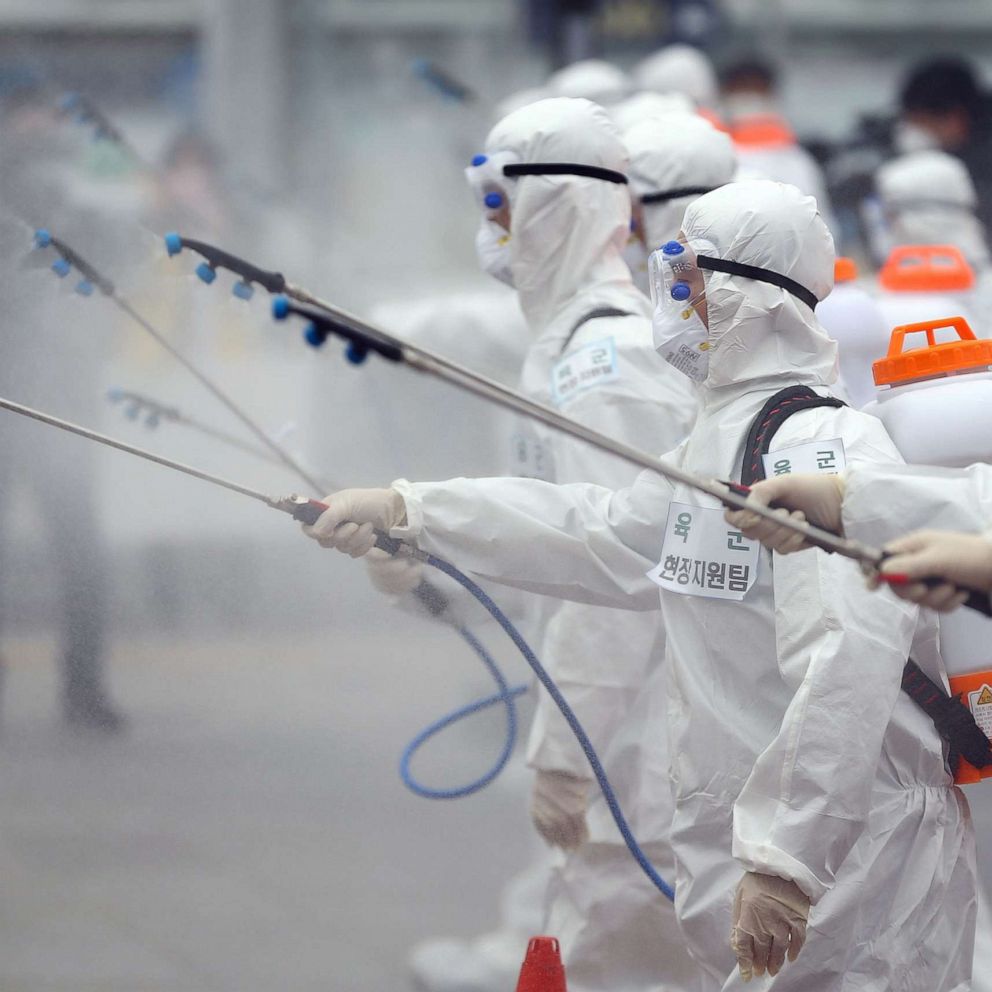Coronavirus government response updates: Trump notes religious holidays amid crisis, CDC issues guidance allowing some to return to work
A key forecasting model is predicting fewer deaths from COVID-19 than expected.
As the U.S. death tolls nears 15,000, President Donald Trump continued to try to shift blame for his response to the coronavirus crisis, lashing out at the World Health Organization, claiming the United Nations agency got "every aspect" of the outbreak wrong, and threatened to put a hold on U.S. funding amid the ongoing pandemic.
As Trump's GOP allies like Sen. Lindsey Graham and Fox News hosts pushed that narrative, newly-surfaced documents reported by ABC News revealed the White House was warned of the deadly pathogen -- and its potential to cost the economy trillions and to claim half a million American lives -- even before the president's travel restrictions on China which he continues to tout.
Late Wednesday, the Pentagon put out a statement saying "no such" report exists.
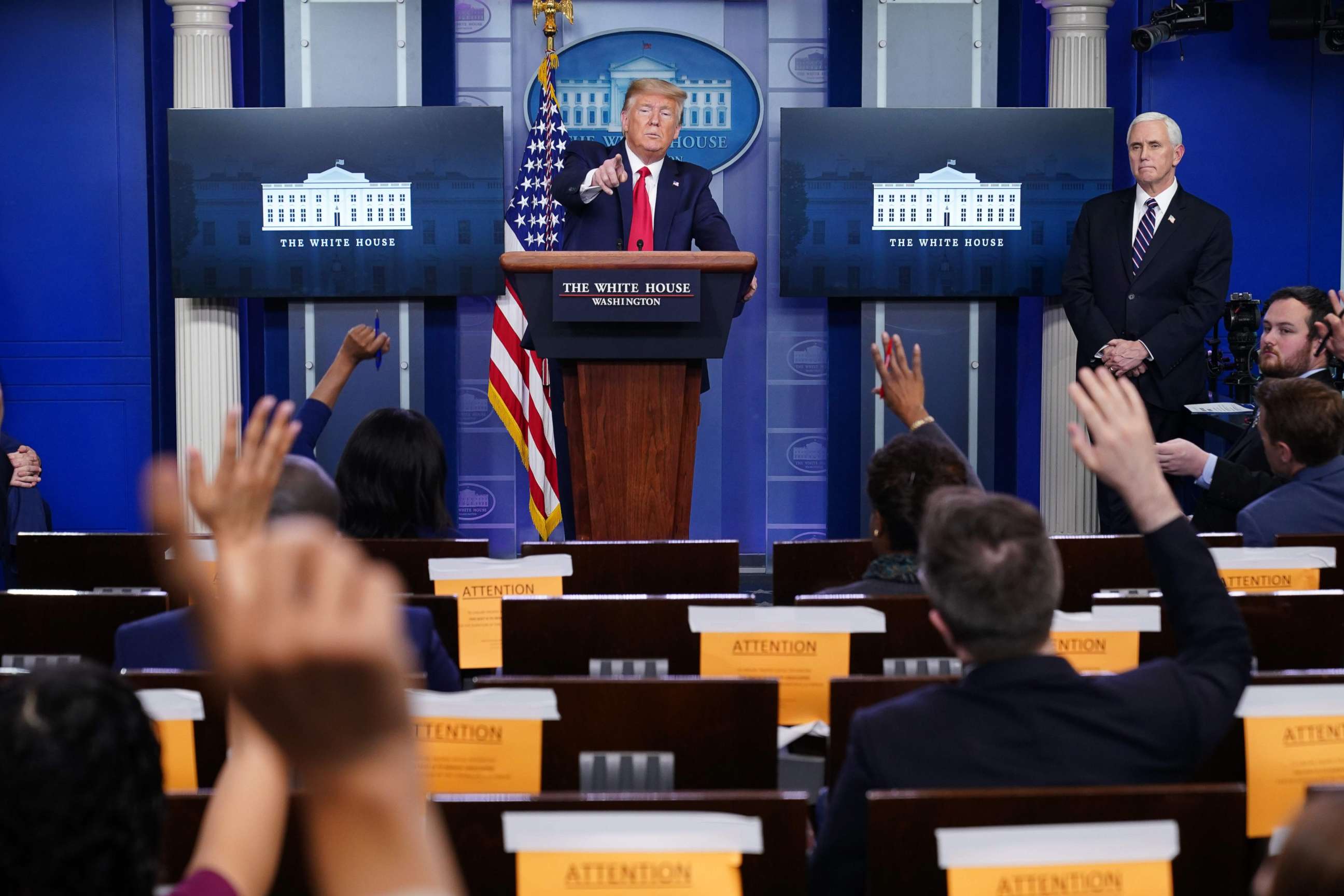
With the U.S. death toll climbing and markets struggling, Democratic leaders said Wednesday they are seeking to double the $250 billion in funding the Trump administration proposed Tuesday for small businesses, adding aid to hospitals and local governments, among other benefits, to the interim relief package.
The CDC also released guidance Wednesday that would allow "essential workers" who have been exposed to positive COVID-19 individuals -- but remain asymptomatic -- to return to work or stay on the job. For weeks, the president has emphasized that the U.S. wasn't built to be shut down.
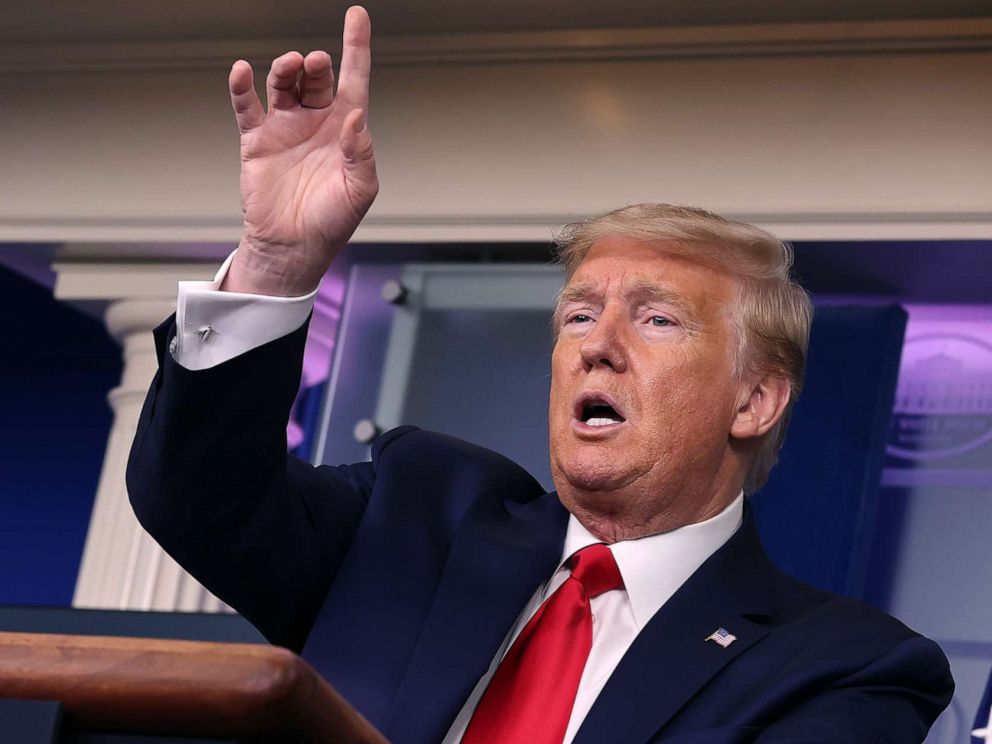
Tune into ABC at 1 p.m. ET and ABC News Live at 4 p.m. ET every weekday for special coverage of the novel coronavirus with the full ABC News team, including the latest news, context and analysis.
Here are Wednesday’s most significant developments in Washington:
- Fauci questioned about why government not doing more to help black Americans especially hard hit by COVID-19
- Intelligence report warned White House of contagion in China as early as November: Sources
- Democrats seek to double the Trump administration's newest request for $250B in emergency funding
- CDC issues new guidance that would allow some people to return to work
- Trump notes Americans are celebrating Passover and Easter amid the crisis
Here are the latest developments in the government response:
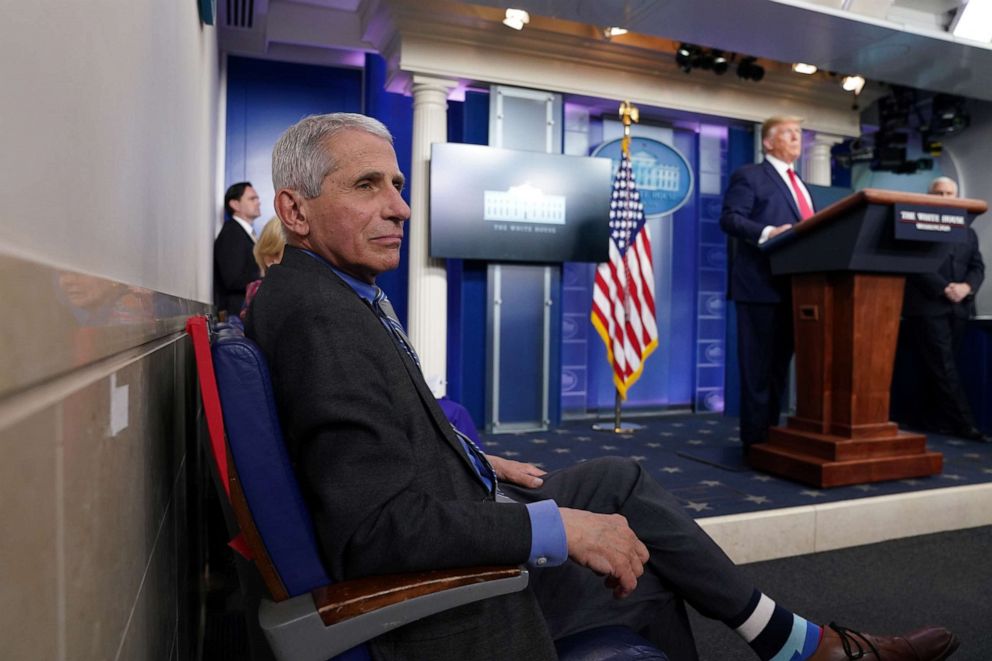
Trump notes Americans must celebrate Passover and Easter amid the crisis
President Trump began the daily White House briefing by noting that Passover begins this evening and Easter is being marked this coming Sunday.
"We're going to have many Easters together in churches in the future," he said.
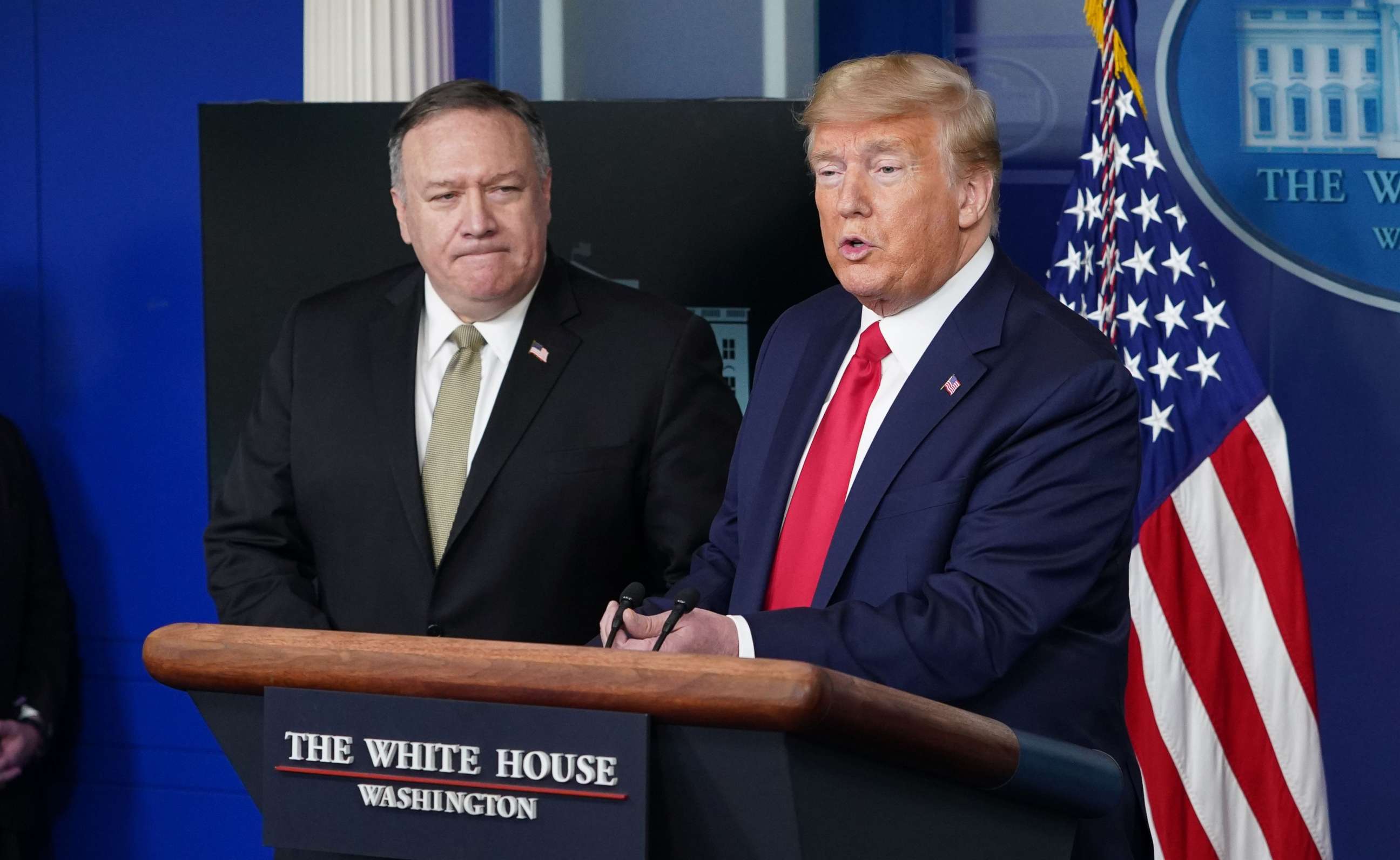
He was joined by Secretary of State Mike Pompeo, who gave an update on State Department efforts to bring thousands of Americans home from abroad.
“The worldwide scale of our repatriation efforts is without parallel in our lifetime,” Pompeo said.
Since Jan. 29, Pompeo said, the State Department has repatriated over 50,000 citizens in more than 490 flights back to the U.S. from 90 countries across the world.
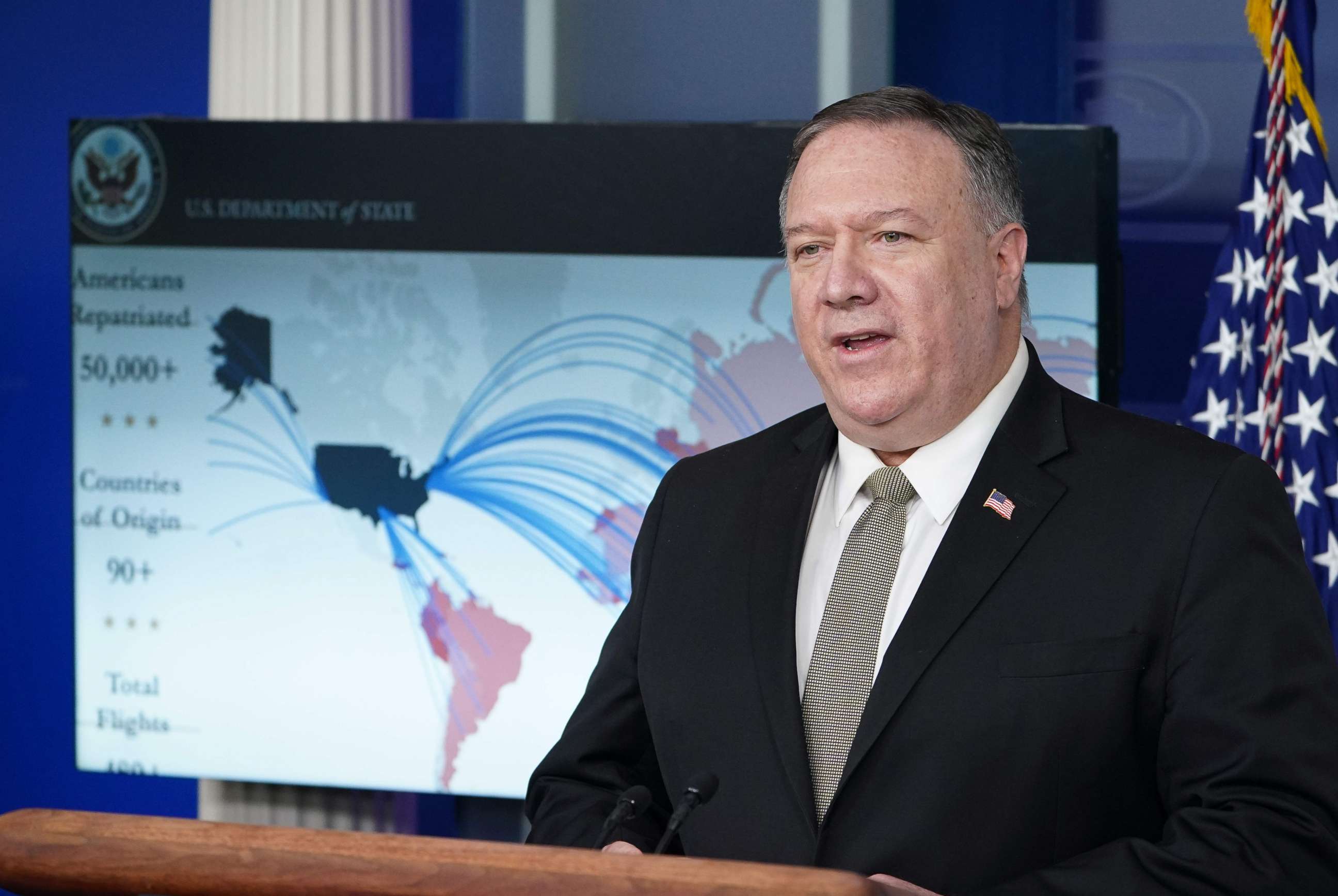
Asked by ABC News' Mutliplatform Reporter Rachel Scott if China should face consequences for withholding information about the spread of the virus, as the U.S. has charged, Pompeo responded, "This is not the time for retribution. But this is the time for clarity and transparency -- China included."
"Every country needs to be transparent about what's gone on in their country," Pompeo said, not directly answering Scott's follow up on whether China specifically should have shared information sooner. "Every country has an obligation to share that information accurately, timely, completely, transparently and thoroughly, just as quickly as they can gather it."
Pressed on when he first learned about the pathogen -- following an ABC News report Wednesday that the White House was warned back in November -- President Trump said he learned "about the gravity" of the virus "just prior to closing the country to China" on Feb. 2.
Late Wednesday, the Pentagon put out a statement saying "no such" warning report exists.
Trump also said he didn’t “remember” being briefed on trade adviser Peter Navarro’s memos -- warning a pandemic could costs trillions and take millions of American lives -- or discussing them with anyone, although he said he has “now seen the memo.”
“Peter sends a lot of memos,” he added.
“I didn't see the memo but I acted as quickly as -- people were shocked that I acted so quickly,” Trump said, once again raising his order to restrict travel from China on Jan. 31.
ABC News' Jordyn Phelps reports:
Overall, President Trump struck an upbeat tone in offering a progress report on the fight against the coronavirus tonight -- saying the U.S. is "hopefully" headed for the "final stretch."
"Some terrible days ahead, but we're going to have some wonderful days ahead and we're going to get this behind us, this terrible thing behind us," Trump said.
The president -- citing downward projections of the U.S. death toll -- optimistically predicted that "soon we'll be over that curve. We'll be over that top and we'll be headed in the right direction."
Once the country is "on that downside of that slope," Trump said, he would like the country to be able to "open with a big bang." Qualifying that his envisioned reopening may have to be done in phases, he said "I think we're gonna to do that soon."
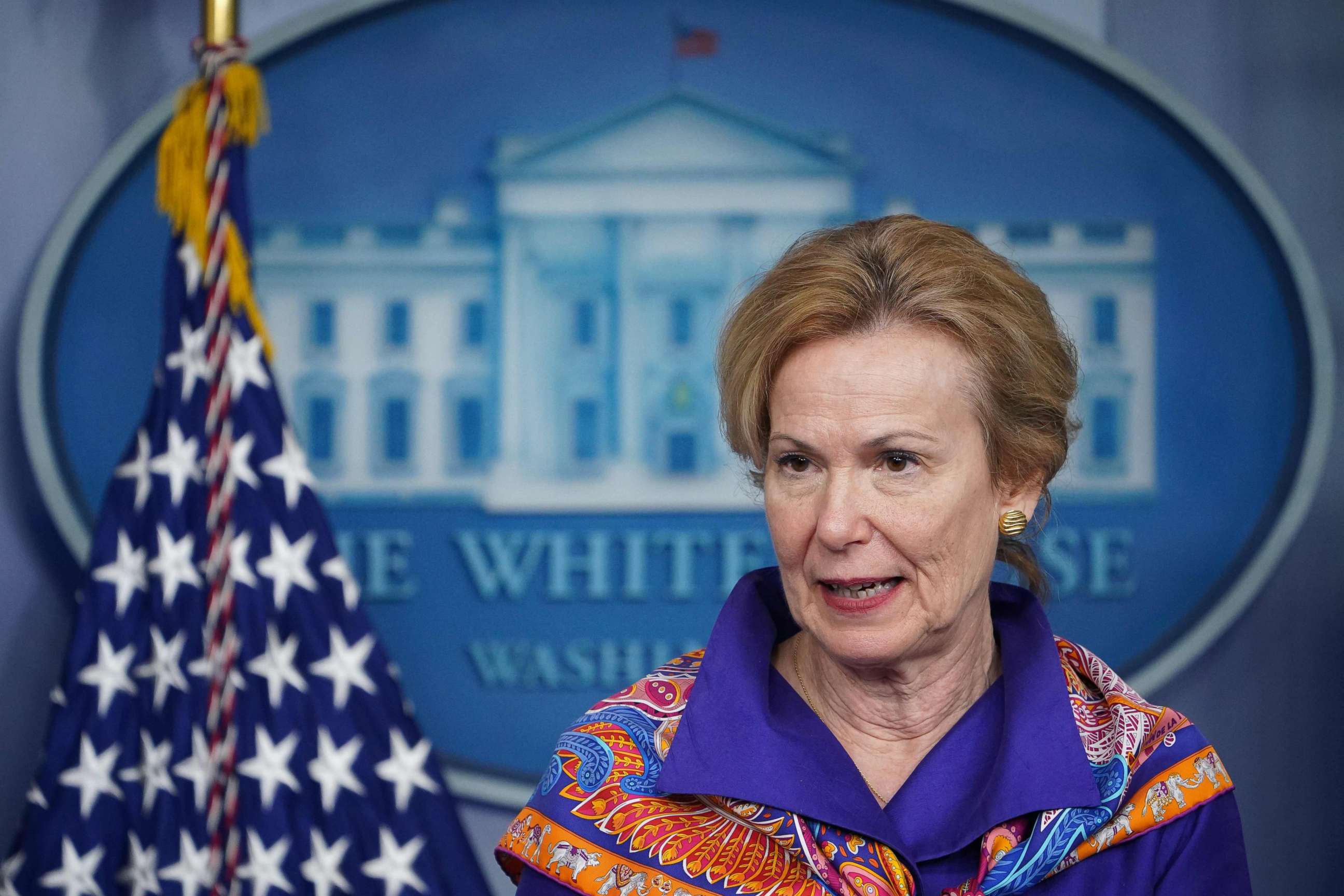
Dr. Deborah Birx, the crisis task force coordinator, addressing the downward mortality estimates, expressed her admiration at the American people's efforts in social distancing.
"We are impressed by the American people and I think models are models. I've always worked on validating. I spent my life validating models," Birx said, downplaying the changing projections.
Asked about when the government may suggest it's safe to no longer engage in social distancing, President Trump argued once again that Americans “want to go back” to work.
“They're going stir crazy. They've been in those houses and those apartments and I mean, they've really been, they've done a great job,” Trump said, reminding of predictions the death toll could have been 2.2 million million if the U.S. did nothing. “So if we stay under the original projection, I think we all did a very good job. Even though there's a lot of people.”
After Trump left, Vice President Mike Pence took a more somber tone even as he tried to be positive. "We find ourselves in the midst of a very tough week," he said. We grieve, but as the 'Good Book' says, we do not grieve like those who have no hope."
Pence also announced the White House task force will be meeting Thursday "with leaders in the African-American community” after the CDC released limited data Wednesday confirming racial disparities in COVID-19 deaths on a national scale.
“There have been historic challenges in the health care of the African-American communities, particularly in our inner cities,” Pence said. “I'll just say from my heart to all of our African-American family members, now more than ever, practice the guidelines, look after those most vulnerable people that have underlying serious health conditions.”
Dr. Anthony Fauci echoed remarks from Birx, saying that mitigation is working but cautioning Americans not to get complacent even as models curve downward.
He also raised what he called “the double whammy” of COVID-19 -- that it is both highly contagious and preys on people with underlying condition -- and it is disproportionately affecting communities of color.
“We are not going to solve the issues of health disparities this month or next month. This is something we should commit ourselves for years to do. What we can do today is to prevent people who are at higher risk from getting into a situation which is much more deleterious than the general population,” Fauci said.
“I plead with all of us in the general population, but particularly our brothers and sisters in the African-American community,” Fauci added.
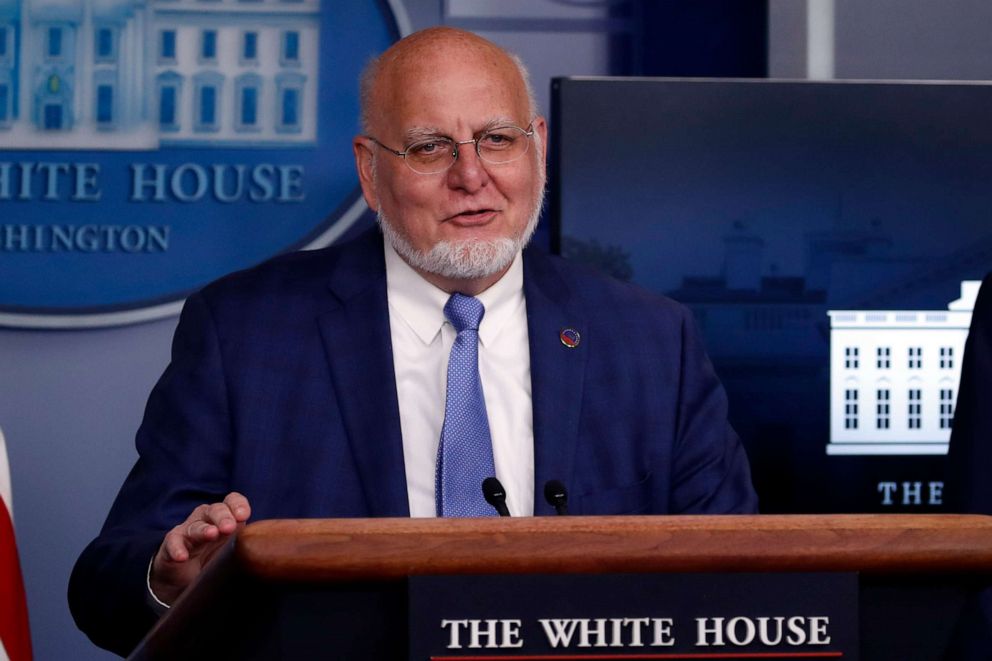
Later, CDC Director Robert Redfield announced new guidelines would be posted on the agency's website that he said would allow what he called "essential workers" to go back on the job-- health care workers, first responders and those working in food supply.
The guidelines would apply to people who have been exposed within six feet to infected people yet remain without symptoms.
He said they would have to take their temperature before going to work, wear a face mask at all times and practice social distancing while at work. They should not congregate in break rooms and crowded places, he said.
From earlier today:
Trump diminishes death toll as one key model reports lower projections
A leading forecasting model for COVID-19 used by the White House task force is now predicting the U.S. may need less medical equipment, that the peak may hit sooner in some states, and that the total death toll may be lower than previously projected.
As of Wednesday morning, the Institute for Health Metrics and Evaluation at the University of Washington predicted 60,415 COVID-19 deaths by Aug. 4, 2020, and that the peak of those deaths will come in just four days. Last week, the model had forecasted roughly 84,000 deaths by early August with a predicted peak on April 16. The White House task force has projected a death toll of between 100,000 and 240,000 in a best-case scenario -- even with extensive social distancing measures.
"We're way under any polls or any of the models, as they call them -- they have models, and we're way under, and we hope to keep it that way, in terms of death," the president told Fox News Sean Hannity Tuesday night.
In Tuesday's briefing, Trump also suggested that states would need fewer hospital beds, ventilators and other equipment than governors originally requested.
"A lot of the occupancy is really getting a little bit lower than anticipated, and that is good. We sort of thought that was going to happen," the president said.
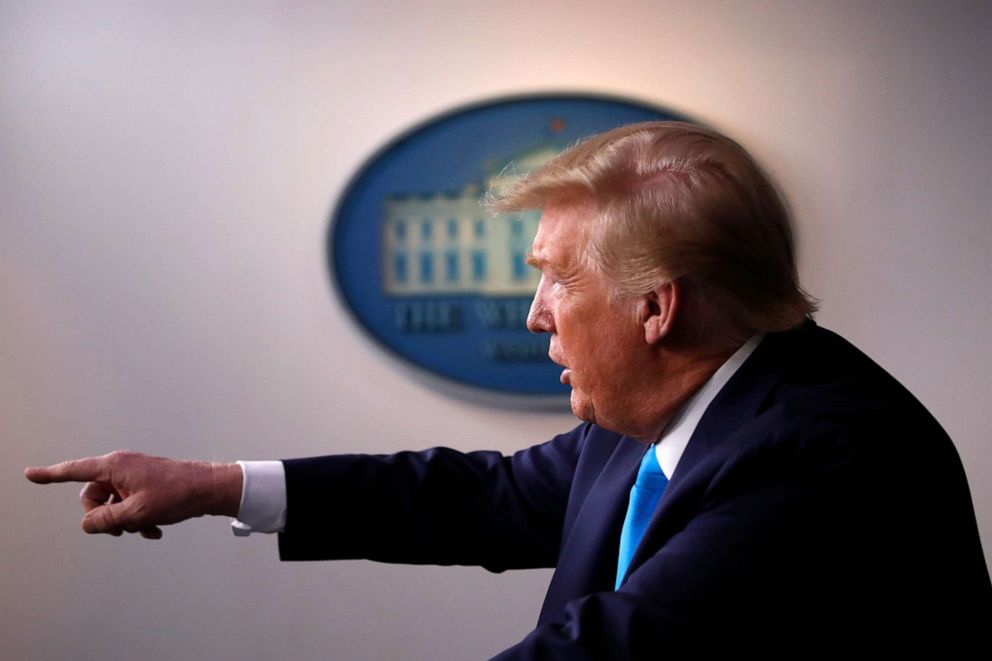
CDC Director Robert Redfield also suggested Monday that because Americans are taking social distancing recommendations "to heart," the death toll will be "much, much, much lower" than models have projected.
However, some officials suggest the model may be too optimistic.
When asked about the new model projections this morning on Fox News, Fauci said, "There's no doubt in my mind it's because of the social distancing" and repeated his note that models are not ideal.
"The thing that trumps models is real data," Fauci said, responding to a question about the projected number of deaths dropping. "And as we continue to accumulate real data, you go back and modify the models. So that's the explanation for what you just said."
"I don't know exactly what the numbers are going to be, but right now it looks like it's going to be less than the original projection," he added.
New York Gov. Andrew Cuomo acknowledged in his press conference Wednesday that hospital admissions in the hard-hit state are decreasing but cautioned that now is the time to "double down" on social distancing, as the death toll continues to steadily go up.
CDC to release guidance that could allow some to return to work
Vice President Pence said at Tuesday’s White House briefing that the CDC planned to release new guidance today that could allow people who have been in proximity to a person who tested positive for COVID-19 -- but subsequently showed no symptoms -- to return to work.
"The CDC will have new guidance tomorrow that the CDC will be publishing for people who were in proximity to an individual that tested positive for coronavirus but have no symptoms," Pence said Tuesday. "And CDC will be publishing new guidance about how those individuals and the circumstances under which they might be able to return back to work using some facial protection and monitoring their temperature."
"Some of the best minds here at the White House are beginning to think about what recommendations will look like that we give to businesses, that we give to states," Pence added.
The CDC recommended on Friday that all American wear non-medical masks in public.
ABC News' Ben Gittleson reports
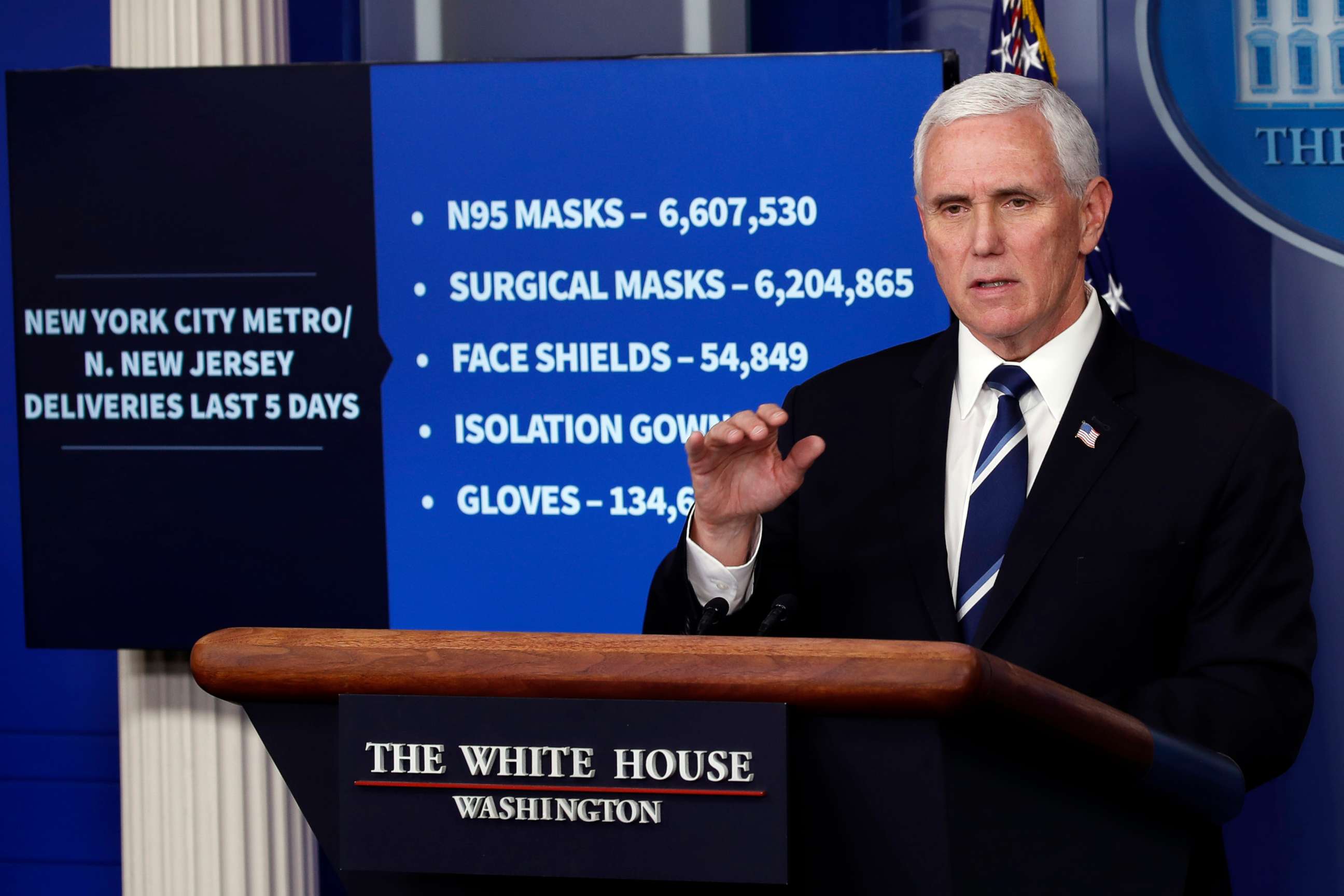
Birx says U.S. may investigate WHO's handling of pandemic after Trump threatens to put hold on funding
Dr. Deborah Birx, the White House's coronavirus response coordinator, was asked to explain Wednesday what President Trump meant when he threatened on Tuesday to put a "powerful hold" on U.S. funding to the World Health Organization, the United Nations health agency.
Birx appeared to partially walk back those comments on ABC's "Good Morning America," noting that the U.S. contributes to the WHO annually.
"When the president said he was holding funds, he didn't say he was restricting and keeping funds permanently away, but instead said, let's investigate what happened," Birx said. "I think that the president wants to complete an investigation of what happened during this current outbreak."
The U.S. is, by far, the single largest financial contributor to the organization.
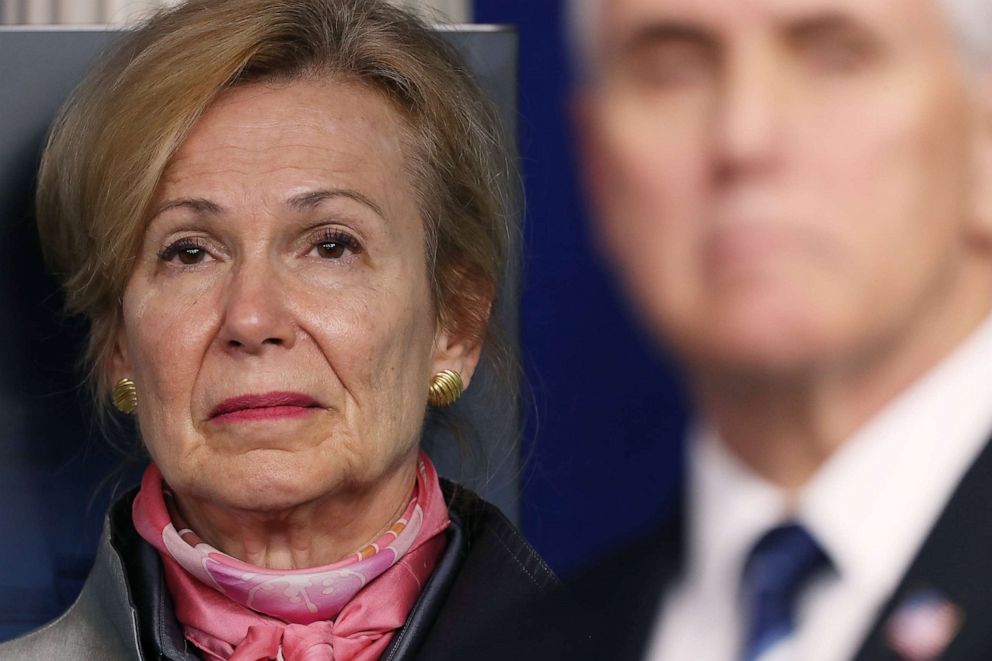
When asked about an ABC News report that sources say U.S. intelligence officials warned of a potentially disruptive contagion in China’s Wuhan region as early as last November -- and that those concerns were laid out in an intelligence report and later briefed to the White House -- Birx responded she was only detailed to the White House five weeks ago.
"I wasn’t here during any of those events," she explained. "I was working in sub-Saharan Africa on HIV/AIDS, so I don’t really know the situational awareness around that report."
Birx also said they hope to roll out an antibody test "within the next 10 or 14 days" that can detect how many Americans have already had the virus but were asymptomatic.
"This makes a very big difference in really understanding who can go back to work and how they can go back to work," she said. "So all of those pieces need to come together over the next couple of weeks."
What to know about coronavirus:
- How it started and how to protect yourself: coronavirus explained
- What to do if you have symptoms: coronavirus symptoms
- Tracking the spread in the US and Worldwide: coronavirus map
